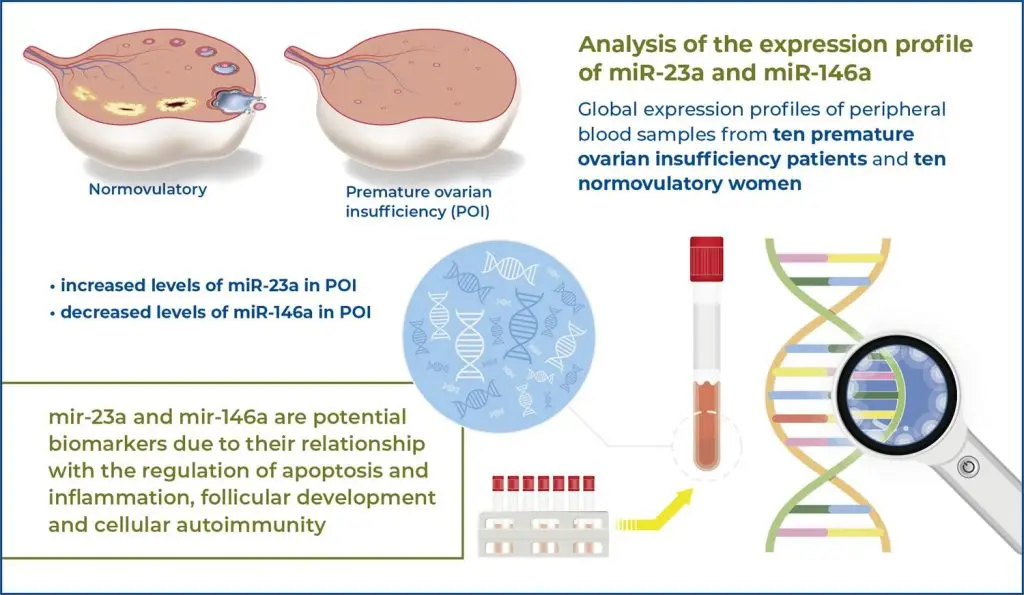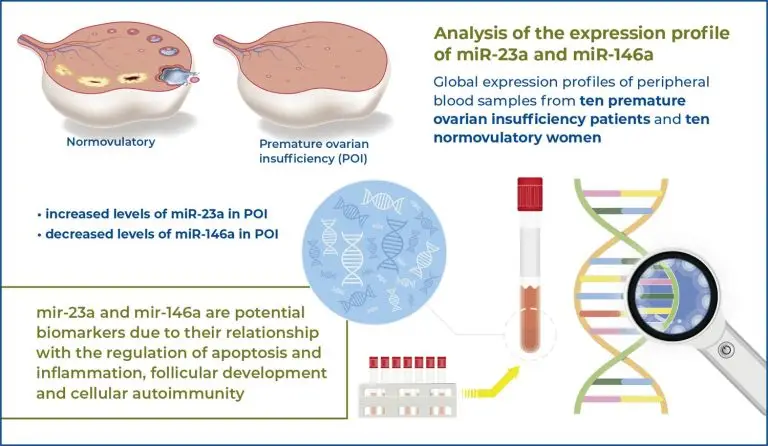einstein (São Paulo). 22/Sep/2025;23:eAO1421.
Expression profiles of miR-23a andmiR-146a in the peripheral blood of women with premature ovarian insufficiency
DOI: 10.31744/einstein_journal/2025AO1421
Highlights
■ Higher miR-23a levels in patients with premature ovarian insufficiency vs. normovulatory women.
■ Lower miR-146a levels in patients with premature ovarian insufficiency vs. normovulatory women.
■ Novel biomarkers for early diagnosis and monitoring of premature ovarian insufficiency.
■ Potential biomarkers to therapeutic targets for premature ovarian insufficiency.
ABSTRACT
Objective:
This study aimed to analyze the expression profiles of miR-23a and miR-146a in women with premature ovarian insufficiency and to evaluate their value as biomarkers of the disease for early diagnosis and prognosis, as well as effective therapies.
Methods:
The global expression profiles of peripheral blood samples from 10 patients with premature ovarian insufficiency and 10 normovulatory women were analyzed for the targets miR-23a and miR-146a and the endogenous control miR-U6 using real-time quantitative polymerase chain reaction. Statistical analysis was performed using analysis of variance and Bonferroni tests for group analysis. Welch’s t-test was used to adjust for unequal variances between groups, and the Friedman test was used to confirm variance similarity.
Results:
Increased miR-23a levels were observed in patients with premature ovarian insufficiency. An inverse correlation was observed for relative miR-146a expression, which showed decreased levels in the premature ovarian insufficiency group compared with the normovulatory group. The ratios of the relative expression levels of miR-23a and miR-146a significantly differed in the premature ovarian insufficiency group but not in the normovulatory group. These findings were reaffirmed by accuracy assessment, with a positive predictive value of 0.92.
Conclusion:
Expression analysis of mir-23a and mir-146a demonstrates their potential use as biomarkers for premature ovarian insufficiency, owing to their relationship with the regulation of apoptosis and inflammation, follicular development, and cellular autoimmunity. This correlation can be assessed in larger sample sizes to confirm its importance in the early diagnosis, monitoring, and identification of potential therapeutic targets for premature ovarian insufficiency.
[…]
73



